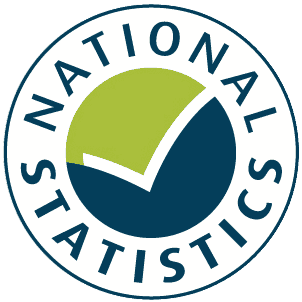Cycle of Many
Posted by Armando Brito Mendes | Filed under relatórios, visualização
uma representação original, circular, de um dia na vida dos americanos
By Nathan Yau
This is a 24-hour snapshot for a day in the life of Americans. Each ring represents an activity with a color. More dots means a greater percentage of people doing the respective activity during a certain time of day.
If you start at the top of the circle, you’ll be at 9:00am when most people who work are already working. Move clockwise, and you see the flows of the day. People break for lunch at noon, get off work around 5:00pm, shift to dinner and then relax. Most people are sleeping by midnight but a small percentage of people are work at night.
Focus on the inside rings versus the outer rings for a rough comparison between work life and home life, each with its own responsibilities.
Source
The data comes from the American Time Use Survey 2020, which is run by the Bureau of Labor Statistics. I downloaded microdata via IPUMS.
Tags: 24h, gráficos, time, uso do tempo
What The New Census Data Shows About Race Depends On How You Look At It
Posted by Armando Brito Mendes | Filed under Data Science, relatórios, visualização
Bom exemplo de relatório com gráficos unitários
Over the past decade, the United States continued to grow more racially and ethnically diverse, according to the results of last year’s national head count that the U.S. Census Bureau released this week.
There are many ways to slice the data and change how the demographic snapshot looks.
Since the 2000 count, participants have been able to check off more than one box when answering the race question on census forms. But breakdowns of the country’s racial and ethnic makeup often don’t reflect a multiracial population that has increased by 276% since the 2010 census. They focus instead on racial groups that are made up of people who marked only one box, with multiracial people sometimes lumped together in a catchall group.
Counting Happiness and Where it Comes From
Posted by Armando Brito Mendes | Filed under Data Science, visualização
Um excelente exemplo de gráfico de bolhas ligadas
Researchers asked 10,000 participants to list ten things that recently made them happy. The result was HappyDB, a collection of 100,000 happy moments. For each moment, I parsed out the subject, verb, and object to better see what makes people happy overall.
For example, someone might have said “I watched a good movie yesterday.” The subject was “I”, the verb was “watched”, and the object was “movie”.
Then I counted and connected the dots.
Tags: bolhas, gráficos, happiness
Vaccination burnout?
Posted by Armando Brito Mendes | Filed under Data Science, relatórios, visualização

Muito bom relatório com gráficos originais e alguns interativos sobre a evolução da vacinação COVID-19
The pace of COVID-19 vaccinations is increasing in a handful of spots around the globe as the more contagious Delta variant spreads and governments expand their efforts to try to reach more people.
In Israel the vaccination rate had plateaued in April as new COVID infections were on a months-long steady decline. But when the arrival of Delta brought a spike of cases in June, the government jumped in quickly with a new campaign urging teenagers to get the shot and parents to vaccinate their children aged 12 to 15.
Tags: COVID, difference charts, gráficos
Republicans Fall Short in Voting-Rights Crackdown While Adding Hassle at Polls
Posted by Armando Brito Mendes | Filed under Data Science, materiais para profissionais, relatórios, visualização
Bom relatório sobre a produção de legislação nos EUA com gráficos muito originais.
A nationwide move by Republicans to tighten voting rules in the wake of Donald Trump’s defeat has largely fizzled into a few additional hassles for voters in the next elections, far short of the sweeping changes described by both the GOP and Democratic critics.
In the name of election security, Republican lawmakers passed dozens of new voting restrictions this year, adding hurdles to mail-in voting, reducing local control over elections and targeting innovations used by large urban counties during the coronavirus pandemic, even as Democratic-led states focused on making voting easier.
Tags: gráficos, legislação, visualização
Plot for D3 Users
Posted by Armando Brito Mendes | Filed under Data Science, visualização

Uma novo biblioteca javaScript para gráficos e comparação com D3
D3 is how I learned JavaScript, and it’s the only chart library I know well. I’m familiar with the idea of things like Vega-Lite, ggplot, and matplotlib, but I’ve never really used them; I’m a monoglot.
But D3 can be hard to learn, and a slow way to make a quick chart. I like to paraphrase Amanda Cox saying, “You should use D3 if you think it’s perfectly normal to have to write a hundred lines of code to get a bar chart.” Over the last ten years there have been many attempts to address this by building libraries on top of D3, but I’ve never gotten into any of them.
Plot, announced today, is the first thing that’s gotten through to me. Granted, if you wanna get all conspiratorial, I suppose they’re paying me to use it for work — but over the last couple months, when I start a personal project and want a chart, I’ve started reaching first for Plot.
Tags: gráficos, java script
Send postcards of plots made in R
Posted by Armando Brito Mendes | Filed under estatística, visualização
Muito engraçado este pacote do R
How many times have you made a plot in R and thought, “I wish I could send this as a postcard to my best friend.” Probably a million times, right? Wish no more. The ggirl package (that’s gg-in real life for short) by Jacqueline Nolis lets you send a plot over the internets to a postcard API, which sends a physical card to an address you specify.



